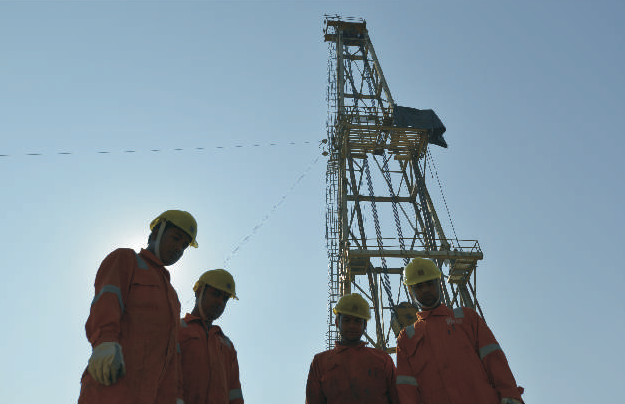The board of Oil & Natural Gas Corp. Ltd (ONGC) has approved an investment of Rs.5,050 crore in Tripura for drilling of wells and creation of surface facilities to produce 5.1 mmscmd gas from the state’s fields.
The ministry of petroleum & natural gas has announced to develop northeast region as a dominant hydrocarbon hub as part of its Hydrocarbon Vision 2030. “In line with this vision, ONGC management has put their first foot forward and approved additional investment of Rs 3,104 crore for drilling of wells and creation of surface facilities to produce 5.1 mmscmd gas from Tripura fields,” a press release issued by the Tripura asset of ONGC said.
The board meeting held at New Delhi on February 11, 2016 had taken this decision. “Earlier in 2008, ONGC board had approved for investment of Rs 1946 crore for the same and total approved investment in Tripura will be Rs 5,050 crore,” the release said.
As a result of geological mapping and exploratory efforts, so far 11 gas fields are discovered by ONGC in Tripura and of these seven fields are on production. ONGC Tripura Asset is carrying out its drilling activities with three owned rigs under operation and well servicing operations through two work-over rigs. An additional four to five hired rigs are expected to be under operation in this year which will step up the exploration activities, the statement said.
This vision document aims to prepare a roadmap for the next 15 years to increase the production of oil and gas in northeast India and outline the necessary investment in the hydrocarbon sector to increase exploration activities, expand the piped natural gas (PNG) network and ensure availability of petroleum products, including LPG, in the remotest corners of the region. Northeast India will have to play an important role in achieving this target as it is endowed with huge untapped natural resources and is acknowledged as the eastern gateway of India’
The two sedimentary basins – Upper Assam Shelf and Assam-Arakan Basin – cover an area of 116,000 sq km and contain prognosticated hydrocarbon resources estimated around 5,040 tonnes, out of which 2,224 tonnes (or 44 per cent) has been established so far, leaving considerable opportunity to establish and develop the remaining 56 per cent. Around 90 per cent of the Upper Assam Shelf has been explored and current production of oil and gas is mainly from this basin, whereas only 10 per cent of the Assam-Arakan fold belt, mainly covering Tripura and some parts of Mizoram, Manipur and Nagaland, has been explored. The region is characterised by large forest cover and tough terrain, which hinders geo-scientific surveys and drilling activities. Seismic data acquisition and processing problems inherent to fold belts result in poor imaging while high formation pressure poses problems during deep well drilling. It is worth mentioning that all structures in west Tripura probed so far have proved to be gas bearing, and the success ratio of exploratory prospects is quite encouraging, according to a government report “Hydrocarbon Vision 2030 for Northeast India” that was released in September 2015.
| Infrastructure gap in Tripura
According to the Hydrocarbon Vision 2030 for Northeast India report, two petroleum blocks have been allocated in Tripura, under the NELP regime. While block AA-ONN-2001/1 has been awarded to ONGC under NELP-III bidding, the second block, AA-ONN-2002/1, has been won by a consortium of GAIL and Jubilant Oil & Gas Pvt Ltd. Connectivity of these blocks is through poorly constructed, single-lane roads, which even lack black top surface in some stretches. In terms of rail infrastructure, the area is still in preliminary stages of development. Connectivity infrastructure in Tripura has been posing serious challenges to exploration activities. Further, development of the railway network needs to be implemented in a time-bound manner. |











